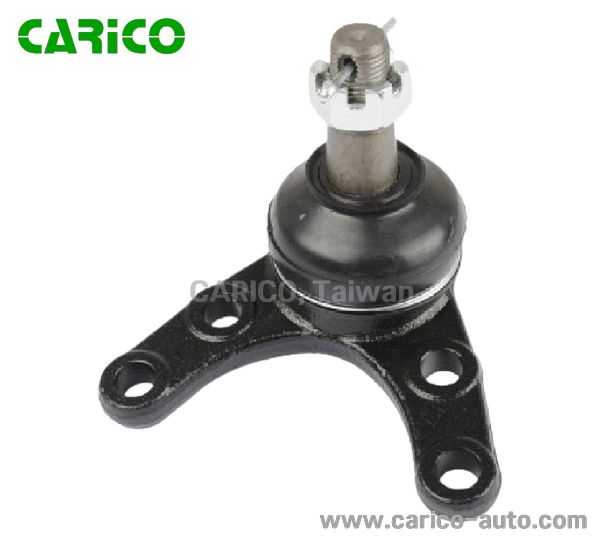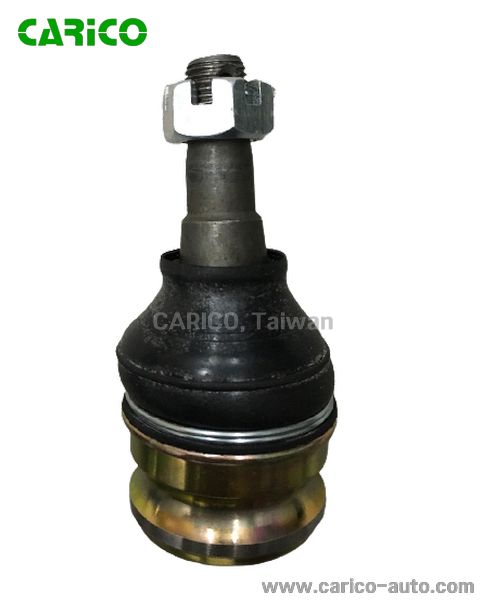2021-12-15
5 Important Facts About Lower Control Arm Ball Joints

Lower control arm ball joints are the pieces of hardware that help keep the wheel attached to the steering wheel. If these fail, then it can cause accidents and be incredibly dangerous.
Replace it before it's too late because you never know when these lower control arm ball joints can fail. It's important to know about all of your car's parts and make sure they are all up-to-snuff because these parts are essential for your safety.
There are 5 important facts about lower control arm ball joints that you should know. Make sure you are aware of how this part functions, what types of signs tell you that they might need to be replaced, and why it is so vital.

What are lower Control Arm Ball Joints?
Lower control arm ball joints are used to connect the lower control arm to the steering knuckle. They are crucial in making sure that the suspension system is working efficiently.
Control arms are responsible for providing front suspension movement and stability. Ball joints help in connecting to the steering knuckle which provides a rigid connection point for the lower control arm to travel in an arc around.
Lower control arm ball joints are one of the crucial parts of a vehicle's suspension system. These ball joints provide a rigid connection between two components, allowing one component to rotate while still providing stability at all times.
Lower control arm ball joints are semi-universal joints, meaning they can be used on either the right or the left side. They provide a pivot point for the lower control arm and allow for movement along an axis. One such joint is the spherical ball joint. It consists of a ball and socket at two ends with a pin passing through both to provide axial rotation for steering and suspension systems. This type of joint is often used with an outer race bearing and inner cone bearing to reduce wear and noise.
The arm ball joints exist in various sizes and shapes, depending on their application (e.g., steering, trailing arms). Lower control arm ball joints may also be classified as one-way or two-way depending on their function (e.g., steering direction).
1)They Provide Stability and Accuracy
The control arm is a suspension system on the vehicle that assists in stabilizing the vehicle. It is used to control or counteract the forces that are generated by the weight of the vehicle. The lower ball joints are attached to the control arm and are primarily responsible for transferring loads from front tires to the axle. They also help in providing stability and accuracy when turning corners.
Lower control arm ball joints are controlled by an inner ball joint, which connects to a lower arm on the control arm. When there is excessive movement caused by corrosion or metal fatigue, it can lead to failure of these joints. They may also experience wear due to long use of lubricant which can cause degradation of parts and eventually lead them to fail as well if not taken care of at time intervals set out by manufacturer recommendations.
The main purpose is to provide stability by connecting the chassis to the wheel hub assembly at a single point. The ball joint allows for rotation in all directions, while also providing accurate positioning of the wheels.
2) They are Used in Various Applications Including Vehicle Suspensions and Industrial Equipment
A lower control arm ball joint is designed to withstand large loads and vibrations because it has to hold up the weight of an automobile or machine for prolonged periods. Without lower control arm ball joints, drivers would lose steering ability and their cars would not be able to move in any direction.
The Lower Control Arm ball joints are a type of ball joint that connects the lower control arm to the axle.
It is also called a Half-shaft joint or a control arm joint.
The Lower Control Arm ball joint is made up of two parts:
1) The Ball Joint:
The ball part has a hole in it and attaches to the lower control arm, and the other part has an opening and attaches to the vehicle's axle.
2) The Grease Seal: The grease seal attaches to the axle’s end of the connection. It prevents grease from leaking out as it provides protection from dirt and dust as well as water corrosion.
3) Failure of the Ball Joint May Cause an Immediate Collapse of the Suspension or Equipment System Under Load
The ball joint is the connection point between the suspension arm and the axle of a vehicle. It helps to control the movement of one or both wheels in relation to each other.
The ball joint is made up of an upper and lower ball with a stud that connects them. The stud has what is called a bushing with grease in it which prevents any metal-on-metal contact, which could lead to wear or even corrosion.
A failure in this area can cause an immediate collapse of the suspension or equipment system under load. This will result in catastrophic vehicle damage, injury, death, and expensive repairs for your vehicle.
4) They Fail Due to Wear & Tear or Defective Manufacturing Which Can Result in Expensive Repairs
Vehicles are maintained and repaired for a variety of reasons. One reason is that they may need to be repaired due to wear and tear or defective manufacturing which can result in expensive repairs.
Vehicles should be maintained and repaired for a variety of reasons. One reason is that they may need to be repaired due to wear and tear or defective manufacturing which can result in expensive repairs.
It doesn't matter what the vehicle is, it needs to be maintained at certain intervals so that it does not go through problems such as being extremely costly or having extremely bad performances on the road.
Wear and tear of tires is inevitable. However, the rubber on the tires of a car that has been poorly manufactured can wear out much faster.
If your tires are not in good condition, it can cause you to have accidents, leading to expensive repairs.
5) Replacing methods Your Lower Control Arm Ball Joints
If your vehicle's lower control arm ball joint has worn out or has completely broken down, it's time that you replace them with new ones. To replace these important components without any issue, follow these simple steps:
The most common method of replacing your lower control arms is to remove them from the car. This means that the car will need to be either jacked up and supported on jack stands or on a lift. Do not remove the lower control arm from the upper ball joint until you have removed the upper ball joint.


